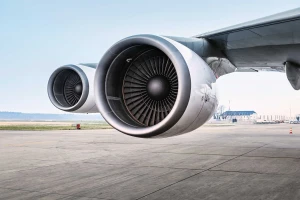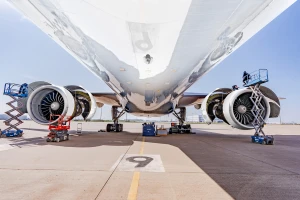good-to-know
Resumption of flight operations
The coronavirus crisis brought an unprecedented slump in worldwide air traffic. Now, more and more airliners are returning to commercial service after having been parked for a considerable period of time. Resuming flight operations causes a lot of work—most of which is needed to keep the engines in shape.
07.2020 | author: Andreas Spaeth | 3 mins reading time
author:
Andreas Spaeth
has been traveling the world as a freelance aviation journalist for over 25 years, visiting and writing about airlines and airports. He is frequently invited to appear on radio and TV programs.

Aircraft are very labor-intensive, regardless of whether they are constantly hauling passengers or parked on the ground. At the peak of the crisis in April, the analysts at Cirium calculated that more than 64% of the entire global airliner fleet was grounded—almost 17,000 aircraft in total. Many airlines are now restarting their passenger services. Parking an airliner takes at least two days. To reawaken such “sleeping beauties” and make them fit for line service takes about 80 man-hours, or about two working days. If airliners are to stay grounded for more than three months, they are usually put in permanent storage mode or mothballed, as this is more cost effective and beneficial for preserving the aircraft’s value. Reactivating a jet from this longer-term storage can take as long as a whole week. While storing an aircraft, it is critical to prevent damage to its sensitive structure, primarily to the complex and expensive engines, caused by the unusually long ground time. “Aircraft don’t like to being parked,” says Patrick Scherrer, Head of Aircraft Preservation in the Technical Division of Swiss Air Lines in Zürich.
Swiss shows the work that needs doing on an aircraft before it can return to service.
Swiss was the launch operator of the Airbus A220, formerly the Bombardier C Series. MTU plays an important part in its geared turbofan engine program, Pratt & Whitney PW1500G. But before the pandemic, the aircraft was still so new that there was no precedent for storing these engines for longer periods. When the crisis started, Swiss had a total of 29 A220s in its fleet. To restart its European operations in June and July, Swiss began activating the A220s, “as this is our smallest aircraft and thus best suited for the early phase of post-crisis operations, when demand is still limited,” Scherrer explains.
For the aircraft to be ready to fly again, staff need to remove all coverings or adhesive tapes sealing the engines, pitot tubes, windows, doors and landing gear, as well as activate electric circuit breakers, clean potable water systems and then refill them and check them for leaks. “Moisture of any kind is the biggest challenge,” Scherrer states. In the case of the engines, this applies to water seeping in from the outside, but also to the moisture contained in oil and kerosene. Even tarpaulins, adhesive covers or plugs do not hermetically seal engines, so the danger of moisture accumulation looms during the whole period of storage or parking.
One way to counter this moisture problem is to put desiccant bags filled with silica gel into the engine inlet in the lower cowling. Each bag weighs half a kilo, and about 50 bags are needed for each of the A220 engines to ensure dry conditions. But even these didn’t bring about the desired effect in this case. “That’s why we introduced ‘dry motoring,’ where the engines are run in idle mode to blow out moisture,” Scherrer explains. The new engine architecture required a bit of extra effort, but this led to important insights. To prevent long-term damage to the engine due to moisture residues in kerosene or oil, the fuel put in the tanks during storage is mixed with a water-binding additive.
When it comes time to restart operations, the additive is removed and tanks are filled up with fresh kerosene and oil. If moisture residues are still found, the engines are run up to the maximum setting for 15 to 20 minutes; however, that burns up to 200 liters of kerosene each time and incurs considerable costs. This procedure is usually performed on parked aircraft in any case about every two weeks, depending on the aircraft type, to keep the engines in good condition. The current restructuring of aircraft fleets involves many engine changes—for example, transferring “green time engines” with ample running time before the next major check is due into aircraft that are still in service. Aircraft put into long-term storage, on the other hand, are refitted with “high time engines,” ones with almost no running time left. “Parking aircraft calls for increased care,” Scherrer says. To supply this care, airlines either rely on their in-house MRO departments or on assistance at external providers such as MTU Maintenance.










